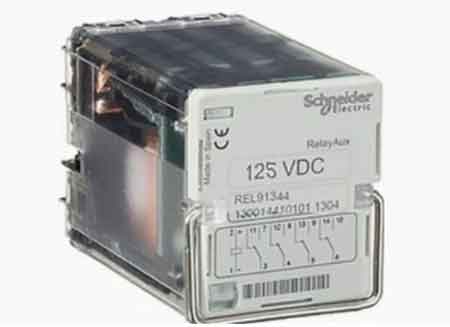Understanding Motor Power Factor Affects Energy Efficiency
By R.W. Hurst, Editor

Substation Grounding Training
Our customized live online or in‑person group training can be delivered to your staff at your location.

- Live Online
- 12 hours Instructor-led
- Group Training Available
Download Our NFPA 70E Fact Sheet – 2024 Electrical Safety Edition

- Understand how NFPA 70E works with NEC and NFPA 70B standards
- Clarify the shared responsibility between employers and employees
- Learn how NFPA 70E supports OSHA compliance
Motor power factor measures how efficiently a motor uses electricity. A low power factor wastes energy, while a high factor improves efficiency, lowers costs, and boosts system performance in industrial electrical applications.
It is a crucial element of electrical systems that directly affects power quality, energy efficiency, and electrical equipment performance. A motor's power factor represents the ratio of active or real power (RP) to the apparent power (AP), which is the product of voltage and current. A low power factor indicates that the motor is drawing more RP and less active power, which can lead to voltage drops, overheating, and energy waste. In contrast, a high power factor suggests that the motor utilizes electrical energy more efficiently, minimizing power losses and improving power quality.
Power Quality Analysis Training
Request a Free Power Quality Training Quotation
What is Power Factor?
Before we explore this subject, let's review the basic concepts of power factor. Power factor (PF) is the ratio of active power (measured in watts or kilowatts (kW)) to AP (measured in volt-amperes (VA) or kilovolt-amperes (kVA)). Active power is the portion of electrical energy that performs useful work, such as driving a motor or illuminating a lamp. In contrast, RP is the part that produces magnetic fields and does not perform any work. Finally, apparent power is the product of voltage and current, representing the total power consumed by a load, including active and reactive power.
The PF is typically expressed as a number between 0 and 1 or a percentage between 0% and 100%. For example, a perfect PF of 1 or 100% indicates that the load consumes only active power and no RP flow. On the other hand, a low PF indicates that the load is drawing more RP than needed, which can cause voltage drops, line losses, and equipment damage.
FREE EF Electrical Training Catalog
Download our FREE Electrical Training Catalog and explore a full range of expert-led electrical training courses.

- Live online and in-person courses available
- Real-time instruction with Q&A from industry experts
- Flexible scheduling for your convenience
Reactive Power, Active Power, and Apparent Power
As mentioned earlier, electrical loads require both active and RP. In the case of motor loads, the active power is used to drive the motor's shaft and perform mechanical work, such as moving a fan, pump, or conveyor. The RP, on the other hand, is needed to produce the magnetic fields that generate true power in the rotating torque of the motor. This RP flow creates an alternating magnetic field that rotates with the motor's shaft, causing the motor to spin. Without the RP, the motor would be unable to operate and stall.
The total power consumed by the motor load is the sum of the active and RP, which is called the apparent power. The following formula expresses the relationship between active power, RP, and apparent power:
Apparent Power (S) = Active Power (P) + Reactive Power (Q)
The unit of measurement for active power is watts or kilowatts, for RP is volt-amperes reactive (VAR), and for apparent power is volt-amperes (VA).
How do you calculate MPF?
It is calculated as the ratio of active power to AP or the cosine of the phase angle between voltage and current in a distribution system. In other words, the PF represents how efficiently the motor uses electrical energy to perform mechanical work. The following formula expresses the PF.
Power Factor (PF) = Active Power (P) / Apparent Power (S) or PF = cos (θ)
Where cos (θ) is the cosine of the phase angle between voltage and current.
What is the power factor for a motor?
The PF for a motor varies depending on the type of motor, the load conditions, and the efficiency of the electrical system.
What is the power factor for a 3-phase motor?
In a 3-phase motor, the PF depends on the phase angle difference between the voltage and current in each phase. Therefore, a 3-phase motor can have a PF ranging from 0.1 (lagging) to 1 (unity) to 0.1 (leading), depending on the load and the electrical system's efficiency. Generally, 3-phase motors have higher power factors than single-phase motors, which makes them more efficient and reliable for industrial applications.
What is the PF of a 1 hp motor?
The PF of a 1 hp motor depends on the motor's design, the load conditions, and the electrical system's efficiency. Typically, a 1 hp motor has a PF between 0.7 and 0.9, which means it consumes more RP than active power. However, by using PF correction techniques, such as installing capacitor banks, it is possible to improve the PF of a 1 hp motor and reduce energy waste.
Does it change with load?
Yes, the PF of a motor changes with the load. As the load on the motor increases, the PF decreases because the motor draws more reactive power to produce the required torque. Conversely, the PF increases as the load decreases because the motor requires less RP to maintain the same speed and output power.
What causes low power factor in motors?
Several factors can cause low PF in motors, including inductive loads, magnetic fields, inefficient electrical systems, and undersized electrical equipment. Inductive loads like motors, transformers, and solenoids tend to draw more RP than resistive loads, such as lamps and heaters. The magnetic fields produced by inductive loads can also cause voltage drops and phase shifts, reducing the PF. Inefficient electrical systems, such as long distribution lines and low voltage levels, can also lead to low PF. Finally, undersized electrical equipment, such as undersized motors or transformers, can cause low PF and reduced equipment performance.
Sign Up for Electricity Forum’s Power Quality Newsletter
Stay informed with our FREE Power Quality Newsletter — get the latest news, breakthrough technologies, and expert insights, delivered straight to your inbox.
PF corrections
Electrical systems can use PF correction techniques, such as installing capacitor banks or synchronous motors to improve PF. A capacitor bank provides a RP source that offsets the RP drawn by inductive loads, thereby reducing the AP and improving the PF. On the other hand, a synchronous motor has a built-in capacitor that produces RP to compensate for the RP drawn by the motor load. By improving the PF, electrical systems can reduce energy waste, increase equipment performance, and enhance power quality.
Related Articles







